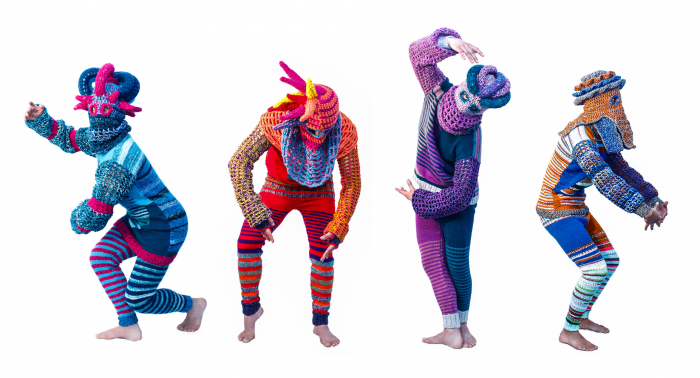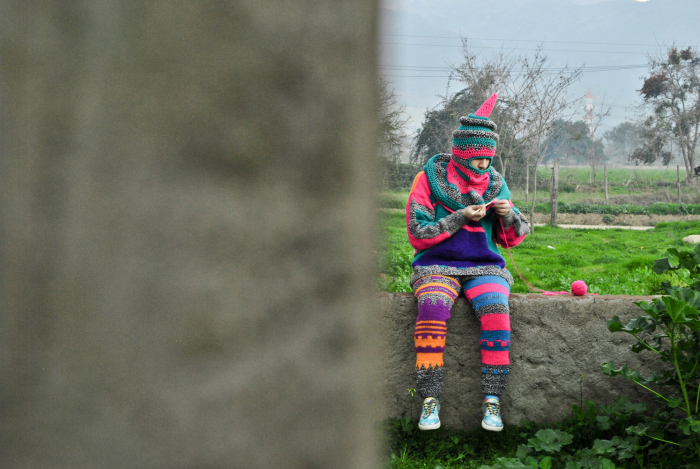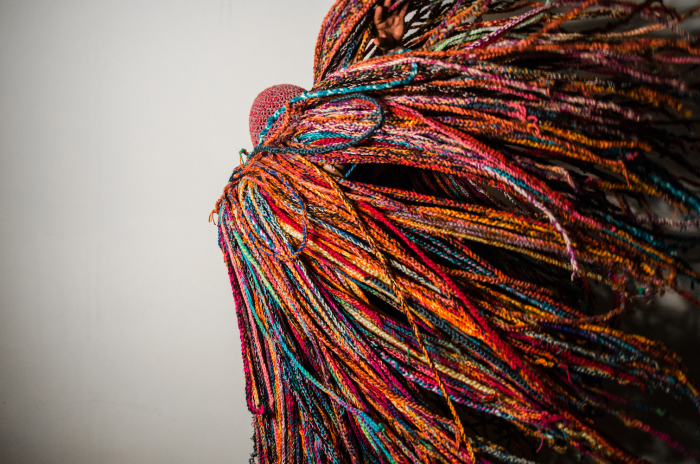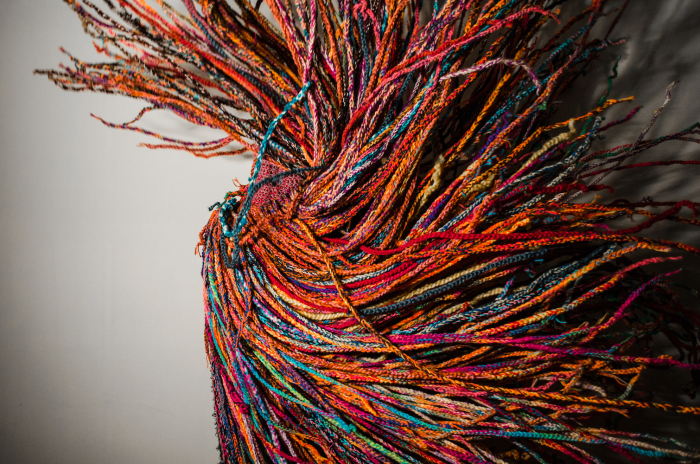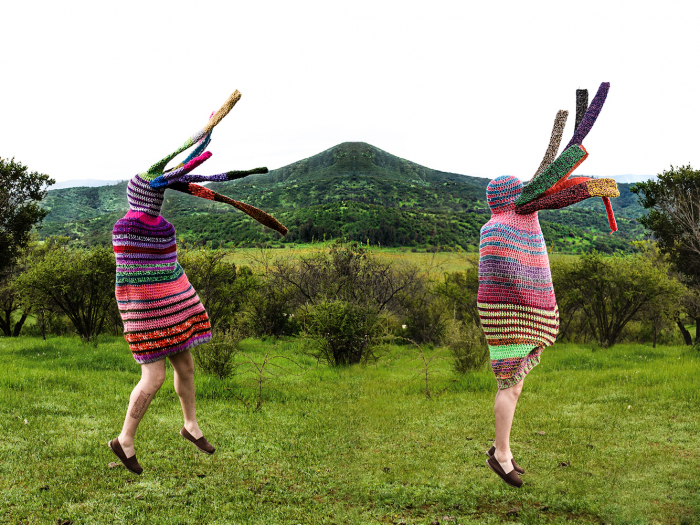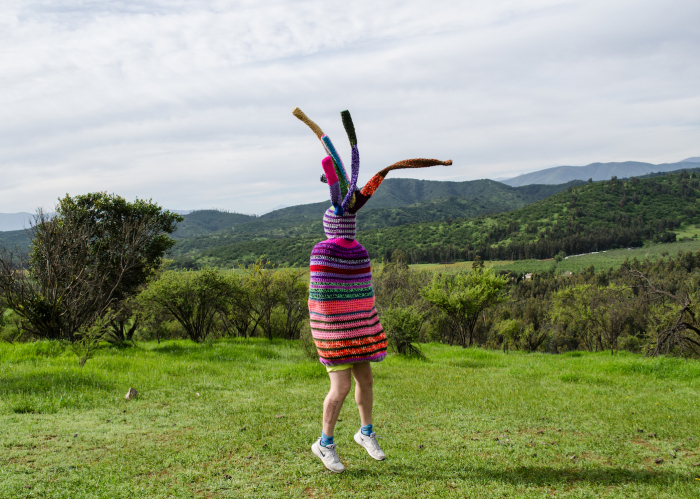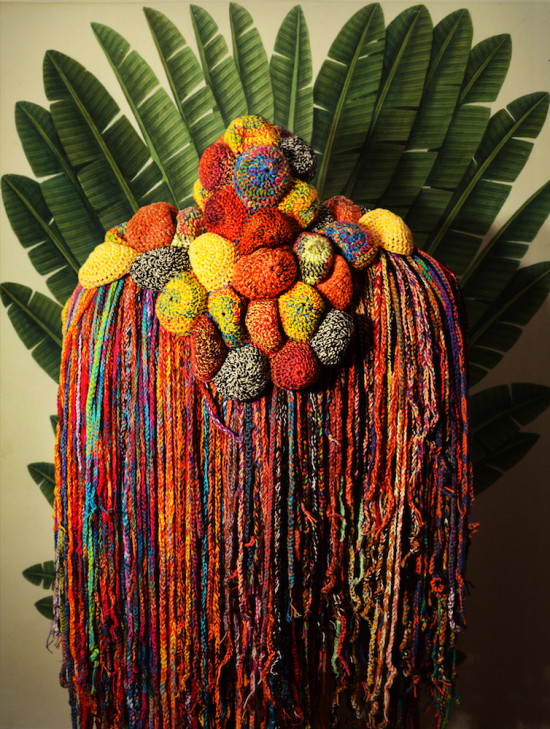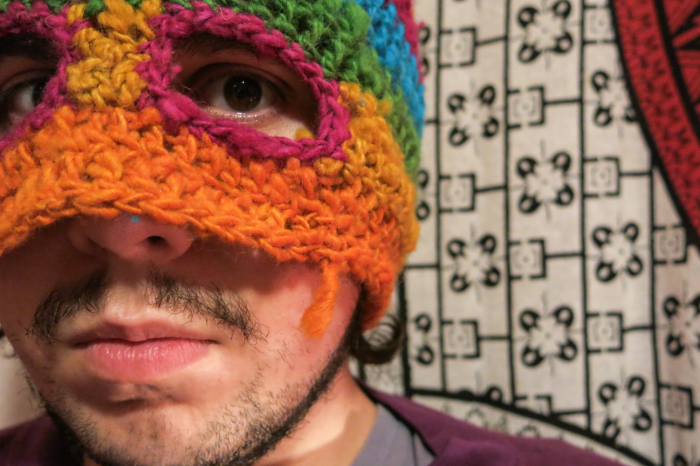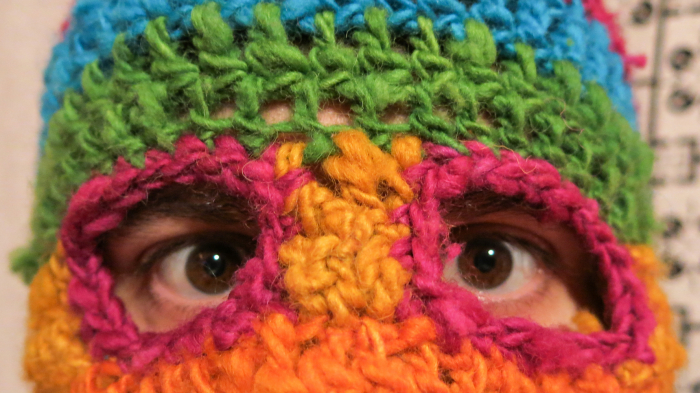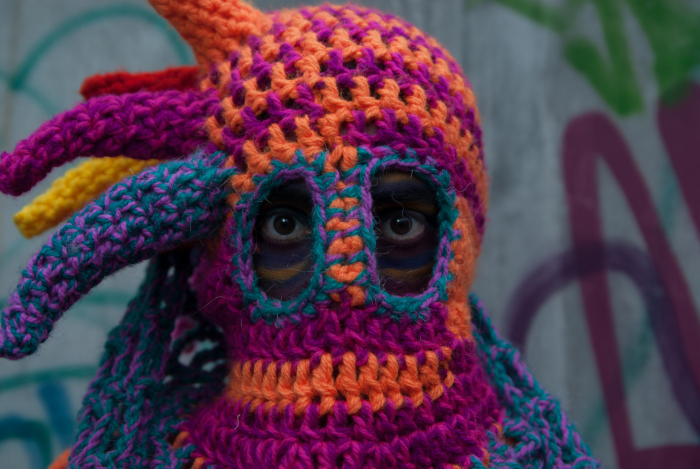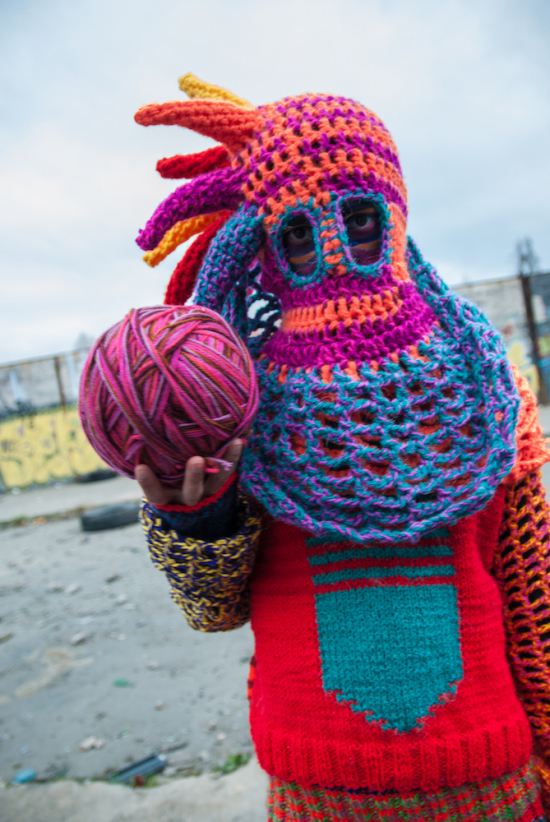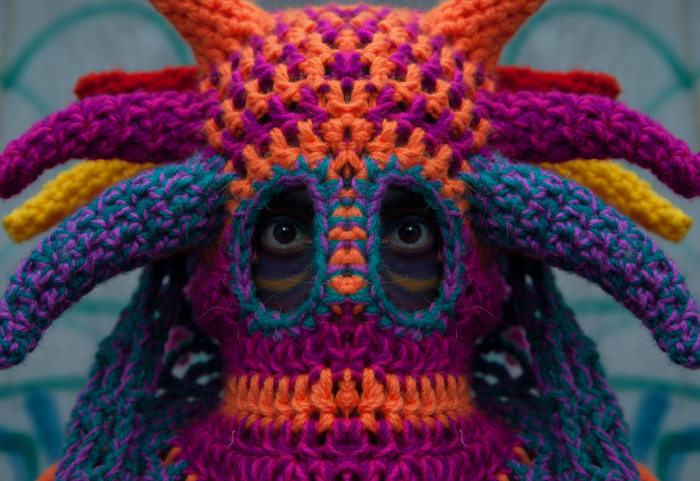INGRATO
by Lina Vergara Huilcamán
Four aliens of coloured wool cheerfully knit in broad daylight on the Cerro Santa Lucía, a hill in downtown Santiago de Chile. I access the facebook page in which the video was published and there I find more woollen masks, travel photographs and pictures of coloured yarns, of meetings and of the one and only passion and common thread: knitting. Here follows what INGRATO, a.k.a. Sebastián Plaza Kutzbach, a twenty-five year old guy who devotes his spare time to his passion for knitting, told me about himself and his work.
“I became interested in knitting when I was very young, seeing my mother and my grannies who spent hours knitting, but I could never join them because mothers think it is not a good idea to teach this kind of things to little boys. It was my boyfriend’s mother who taught me how to crochet at last and that’s when my granny, seeing me so motivated and focused on learning, taught me how to knit. I wanted to study textile design, I have always loved everything about clothes and the body but, as I didn’t have the opportunity to do that, I studied graphic design. The spark went off the day I took some balls of wool and worked all day long until I managed to turn them into a cap, which later became a balaclava and then a poncho... It takes me four to five days to make a mask, working five or six hours a day, and a whole dress requires a month’s work. I still haven’t understood what the mask means to me. It represents precisely how I felt and what I thought and lived when I was making it and all this can be read in the colour and the technique I have chosen to use, the finishings... and when I wear it I don’t feel free, but rather imprisoned inside an object. Every mask contains the energy of the person who has made it in the precise moment in which they made it. I like to experiment new things, to discuss with other people and share experiences with them, in my small living room at home I hold workshops whose participants are different people with a common passion for knitting, and most of them are much older than me. We talk about the body and what this work means to each one of us. Each participant works and interprets the work in their own way. The workshop is completely spontaneous and unplanned, there are neither themes nor guidelines, we don’t make a preparatory sketch of what we are going to create, nobody draws the mask before, everything comes out at the moment. I don’t make sketches either, before I start to work I imagine what I want to do, I think about colours, I take the balls of wool, I choose the ones I like the most and then I begin. I don’t know why I love knitting or why I find it so natural, but thanks to these workshops I better understand its role in my life. To make choices on the spot is what I like the most because it allows me to make mistakes, and the more mistakes you make the better the result will be. To get something wrong, to make things differently from how we have imagined them, is always much better than to conform to a scheme, it means being free. During my workshops I add some recycled materials to wool – like plastic, hemp and others – it is a way to reuse the waste we produce every day and to see these materials in a new guise. My students adore the idea of recycling and I like to see them come back with the oddest materials they collect at home for their works. The video that you have seen was made at the end of one of these workshops, it was meant to document the work done. I simply suggested going out, and it was them who decided to bring needles and balls with them and work in public. They wanted to act in a space, to work among people, which soon started to draw near and look and comment. The result was really interesting because some people found these masks beautiful while some others thought they were horrid and badly made, everything always depends on the weaver’s ability and intentions, and on the beholder’s perspective and aesthetic sense. What is beauty? This is the first question that aroused in that moment.
Before moving to Santiago I lived in a small town named Villa Alemana, I had completed my studies and still hadn’t found a job, so I spent the whole winter studying wool dyeing. I had enough time and a lot of space to walk through the woods, collect leaves for my natural pigments and accumulate rainwater. The best water for dyeing is rainwater because it helps to absorb pigments and it contains less chemicals than tap water. I have dyed yarns to make three ponchos with walnut and onion leaves, remains of coffee beans, black beans, and grass. One of the secret methods to fix colours is using urine, so I have collected mine, I have added it to boiling water and the colours turned out to be much better than those fixed only with salt. I found everything on the web – Colombian instructions.
Then, as soon as I found a job and moved to Santiago, I had to leave these techniques because I had problems with space, time and context. Santiago is a big city where it never rains and, when it does, the rain is laden with smog. Now I use a lot of synthetic materials, I think that the excess of colour represents the city, chaos, and modernity very well.
I create in my spare time, after work, if I need to go out I take my needles with me and so I go on, some people make comments about it, but in Chile the HOMBRES TEJEDORES* movement is getting bigger and bigger, it is different than a few years ago. Every year I travel as much as I can and see new things, discover new materials and colours. Last year I went to Bolivia, to the southernmost towns and cities, near Chile and Argentina. There I found the workshops where craftsmen make the costumes for La Fiesta de la Tirana.**
INGRATO means thankless, because in Chile handcrafted work is not given its just value. It is a thankless job to produce artefacts nowadays, surrounded as we are by factories and the Chinese industry. Handicraft is underestimated and weavers, embroiderers, and potters are disappearing because they can’t sell their artefacts at a fair price, proportionate to the many hours they have spent making them. People ask me to sell them my masks for ten/twenty dollars, which creates rather ridiculous situations.
INGRATO wants to show the work of craftsmen, and teach people how many hours it takes to make an artefact and therefore teach them to give value to it.”
Thank you INGRATO for your time, for having shared your dream with me and, together with you, I dedicate this small space to all the craftsmen who have disappeared in the Eastern Sea.
* male weavers | ** religious festival
